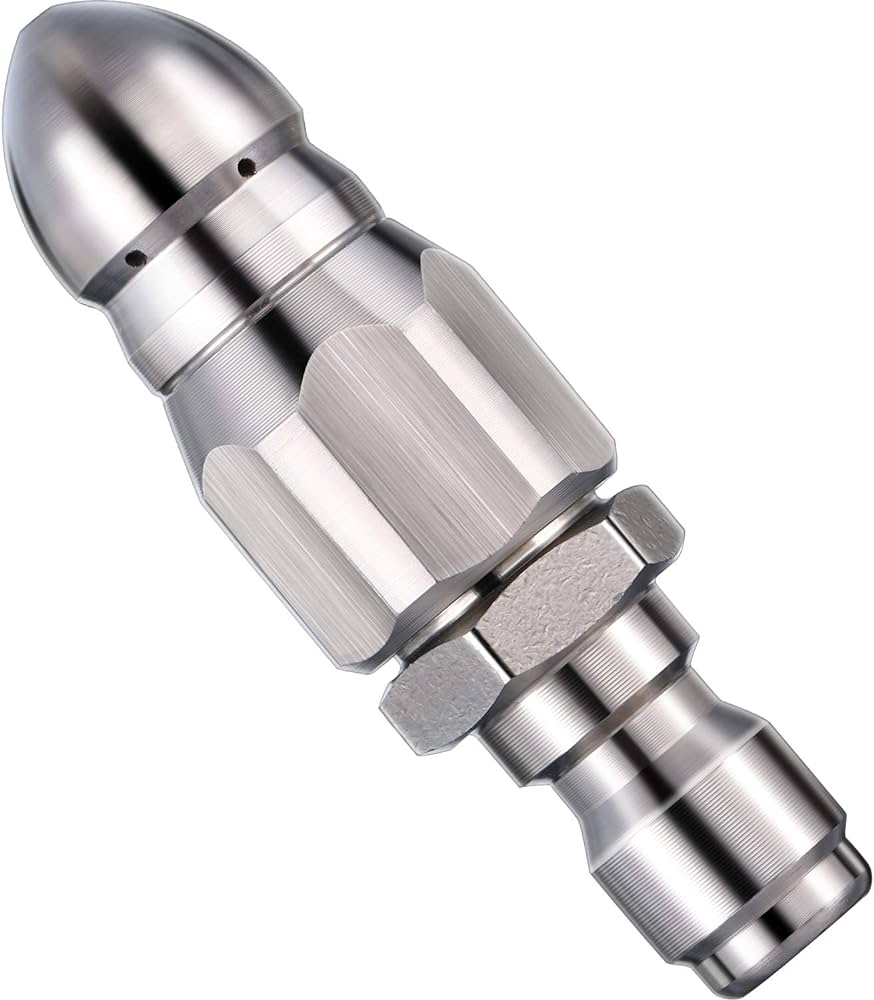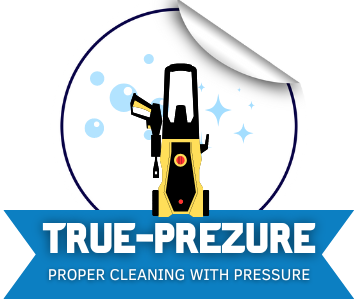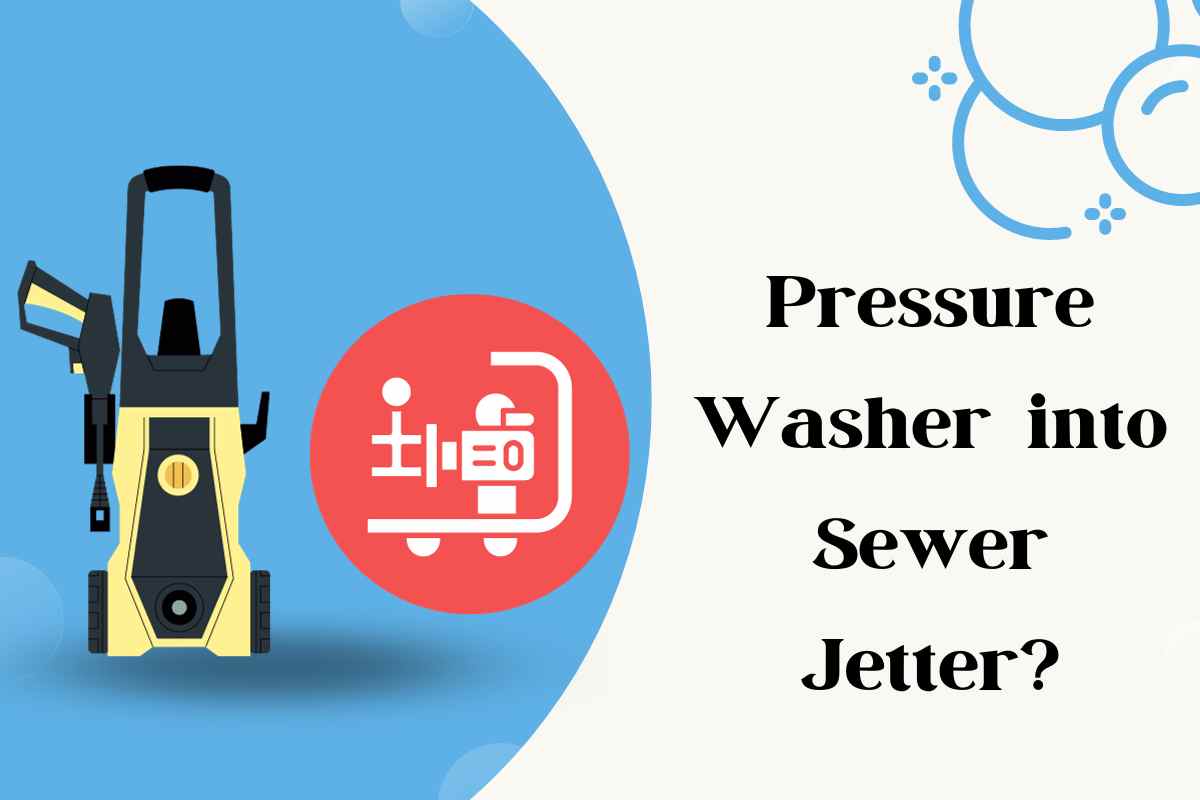Are you tired of dealing with clogged drains and sewers? Do you want to take matters into your own hands and save money on expensive plumbing services?
If that’s the case, then transforming your pressure washer into a sewer jetter might be the perfect solution for you! This easy do-it-yourself project can turn your ordinary pressure washer into a powerful tool that can effortlessly remove even the most stubborn blockages in your pipes.
In this blog post, we will walk you through everything you need to know about converting a pressure washer into a sewer jetter, including when and why it may be necessary, available conversion kits, and the most suitable pressure washers for this task. Let’s get started!
How To: Convert a Pressure Washer Into a Sewer Jetter
Converting your pressure washer into a sewer jetter might seem like a daunting task, but it’s actually quite simple with the right tools and knowledge. The first step is to attach a specialized nozzle to the end of your winner pressure washer wand that is designed specifically for cleaning out drains and sewers. These nozzles typically have multiple jets that shoot water in different directions, creating powerful streams that can easily clear out debris.
Next, you’ll need to invest in some high-pressure hose that is capable of withstanding the strong forces generated by your pressure washer. Standard garden hoses won’t cut it here – look for hose rated at least 3000 PSI or higher, with reinforced layers for added durability.
Once you’ve got all the necessary components assembled, simply connect them together using quick-connect fittings and you’re ready to go! Start up your pressure washer and begin feeding the hose into the drain or sewer line slowly while blasting away any blockages with your new sewer jetter attachment.
With a little bit of patience and practice, converting your pressure washer into a sewer jetter can be an incredibly useful tool for keeping your pipes clean and running smoothly.
Why and when do You Need a Sewer Jetter
Sewer jetters are a powerful tool that can help you clean out drainage systems and prevent clogs. They use high-pressure water to blast away debris, grease, and other materials from the inside of pipes.
One of the main reasons why you might need a sewer jetter is if you’re experiencing slow or blocked drains. This can be caused by a buildup of materials over time, such as grease, hair, soap scum, or even tree roots. A sewer jetter can quickly clear these blockages and restore proper flow to your plumbing system.
Another reason why you might need a sewer jetter is if you’re planning on doing any renovations or construction work around your property. Sewer lines can easily become damaged during excavation projects or when heavy equipment is used nearby. By using a sewer jetter before and after the work is done, you can ensure that your pipes stay clear and free from damage.
Regular maintenance with a sewer jetter can help prevent future problems from occurring. By keeping your pipes clean and free-flowing at all times, you’ll reduce the risk of backups and costly repairs down the line.
In summary, whether you’re dealing with existing clogs or trying to prevent future issues from arising, investing in a sewer jetter is an excellent way to keep your plumbing system running smoothly.
What You Need to Know Beforehand
Before you convert your pressure washer into a sewer jetter, there are some things you need to know beforehand. First and foremost, safety should be your top priority. Sewer jetting can be dangerous if not done properly.
You need to ensure that the hose is rated for the PSI of your pressure washer and sewer jetter conversion kit. Using a hose with an insufficient rating could lead to bursting or other damage.
Make sure that the nozzles included in your kit are suitable for the type of cleaning you will be doing. Different nozzle sizes and shapes provide different levels of power and precision when clearing out clogs.
It’s also important to have proper personal protective equipment (PPE) such as gloves, goggles, and ear protection handy when performing any kind of pressure washing or sewer jetting job.
Make sure you’re familiar with how a sewer system works before attempting any DIY repairs or maintenance on it. Know where potential blockages might occur so you can avoid causing more damage while trying to fix them.
By taking these precautions beforehand, you’ll help ensure a safe and successful conversion from pressure washer to sewer jetter!

What’s The Difference?
When it comes to cleaning drains, there are different tools that you can use. One of the most popular ones is a sewer jetter. But what’s the difference between a pressure washer and a sewer jetter?
A pressure washer is designed for outdoor cleaning tasks like washing cars, decks, patios, and siding. It delivers high-pressure water streams that blast away dirt and grime.
On the other hand, a sewer jetter is specifically designed for unclogging drains and pipes. Unlike a pressure washer, it uses specialized nozzles to deliver high-pressure water streams that can remove even stubborn blockages like tree roots.
Another key difference between these two tools is their power output. Pressure washers typically have higher PSI (pounds per square inch) ratings than sewer jetters because they’re meant for tougher jobs.
While both tools require some degree of skill to operate safely and effectively, using a sewer jetter requires more training due to its potential risk of causing damage if not used correctly.
So if you’re looking to clean your drain or pipe system thoroughly and effectively without damaging them in the process, then opting for a purpose-built tool like a sewer jetter could be your best bet!
Pressure Washer Sewer Jetter Kit Conversion Kits
A pressure washer sewer jetter kit conversion kit is a tool that allows you to convert your existing pressure washer into a powerful sewer cleaning machine. These kits are designed to be easy to install and provide an affordable alternative to purchasing a dedicated sewer jetter.
Before purchasing a conversion kit, there are several things you need to consider. Firstly, ensure that the conversion kit is compatible with your pressure washer model. Secondly, check the size of the hose included in the kit as this will determine how effective it will be at clearing out clogs.
The key difference between a standard pressure washing nozzle and a sewer jetting nozzle is their design. Sewer jetting nozzles have specially designed orifices that create high-pressure water streams capable of cutting through tree roots and other obstructions.
When looking for the best pressure washer for use with a sewer jetter conversion kit, it’s important to choose one with adequate PSI and GPM ratings. Two great options include Sun Joe SPX205E-MAX Electric Pressure Washer (1550 PSI Max) and AR Blue Clean AR383SS Electric Pressure Washer (1900 PSI).
With proper installation and maintenance, using a pressure washer sewer jetter conversion kit can save you time and money by allowing you to perform efficient DIY drain cleaning without having to call in professional plumbers.
Best Pressure Washer for Sewer Jetter
Choosing the right pressure washer for your sewer jetting needs can be overwhelming. There are many different models and brands available on the market, each with their own set of specifications and features. However, there are a few key factors to consider when selecting the best pressure washer for sewer jetting.
1. Sun Joe SPX205E-MAX Electric Pressure Washer, 1550 PSI Max
The Sun Joe SPX205E-MAX Electric Pressure Washer is a great option for those looking to convert their pressure washer into a sewer jetter. With a maximum PSI of 1550, this electric pressure washer has enough power to handle tough clogs and blockages in your pipes.
CLICK ON THE PICTURE AND CHECK TODAYS PRICE
One thing to keep in mind when using the Sun Joe SPX205E-MAX as a sewer jetter is that you will need to purchase separate conversion kits. These kits usually include specialized nozzles and hoses needed for the job.
Another benefit of this electric pressure washer is that it’s compact and easy to maneuver, making it ideal for working in tight spaces such as underground pipes or small drain lines.
If you’re looking for an affordable yet powerful option for converting your pressure washer into a sewer jetter, the Sun Joe SPX205E-MAX Electric Pressure Washer may be just what you need.
2. AR Blue Clean AR383SS Electric Pressure Washer 1900 PSI
The AR Blue Clean AR383SS Electric Pressure Washer is a great option for those looking to convert their pressure washer into a sewer jetter. With its 1900 PSI maximum pressure, it provides enough power to effectively clean out clogged pipes and drains.
CLICK ON THE PICTURE AND CHECK TODAYS PRICE
One of the standout features of this model is its adjustable spray nozzle, which allows you to switch between wide fan and narrow pencil jets depending on your cleaning needs. This makes it a versatile tool for tackling different types of blockages in your sewer lines.
Additionally, the AR383SS comes with several accessories that make converting it into a sewer jetter even easier. The kit includes a specialized hose, nozzle attachments, and adapters that allow you to connect the pressure washer directly to your sewer line.
If you’re looking for an affordable yet powerful electric pressure washer that can be easily converted into a sewer jetter, the AR Blue Clean AR383SS is definitely worth considering.
Conclusion
As we reach the end of this article on how to convert a pressure washer into a sewer jetter, it’s important to remember that safety should always be your top priority when working with any kind of machinery. Always read and follow the manufacturer’s instructions carefully before attempting any modifications or conversions.
Faq-
How many PSI’s in a Sewer Jetter?
Sewer jetters come in different sizes and with various pressure capabilities. The PSI or pounds per square inch of a sewer jetter is an essential factor to consider when choosing the right tool for your job. A typical sewer jetter comes with a pressure range between 1500 PSI to 4000 PSI, depending on the model.
The higher the PSI, the more powerful and effective the sewer jetter will be at removing blockages from pipes and drains. However, it’s important to note that using too much pressure can also cause damage to old or fragile pipes.
Therefore, it’s crucial to select a sewer jetter with just enough power for your specific needs. Consulting with a professional plumber or technician can help you determine what PSI level is best suited for your particular application.
Knowing how many PSIs are in a sewer jetter will guide you in selecting the right equipment needed for any plumbing task as well as ensuring proper maintenance and care of your tools.
Can you use a pressure washer as a drain jetter?
Many people wonder if they can use their pressure washer as a drain jetter. The short answer is no, you cannot. While these two tools may seem similar, there are some key differences that make it impossible to convert a pressure washer into a sewer jetter.
Firstly, the nozzle on a pressure washer is not designed for cleaning out drains and pipes. It produces high-pressure water in a small area which could damage your plumbing system. Drain jetters have special nozzles that are designed to direct water flow in specific ways to effectively clean out pipes without causing any damage.
How many GPM is a sewer jetter?
Understanding GPM in a Sewer Jetter
As you explore how to convert a pressure washer into a sewer jetter, it’s essential to understand the role of gallons per minute (GPM) in the process. This measurement indicates the flow rate of water through your equipment and plays an integral part when using your converted pressure washer as a sewer jetter.

